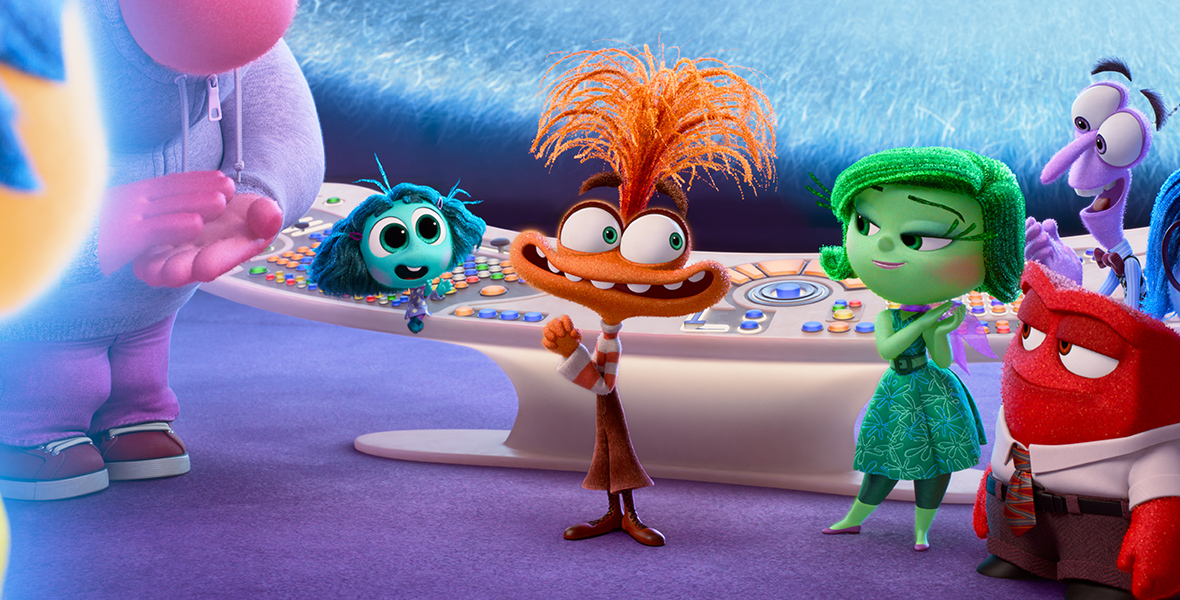Inside Out (2015)
When “Inside Out” first premiered in 2015, I approached it with the same enthusiasm I have for most Pixar films. With a remarkable track record, excluding perhaps a couple from the “Cars” series, Pixar has consistently delivered exceptional storytelling. At the time, however, I was grappling with my own depression, which colored my initial viewing experience. The film’s intimate portrayal of emotions felt almost too personal, reminding me of my own struggles.
Pixar typically excels at taking seemingly small concepts and transforming them into extraordinary narratives. Initially, “Inside Out” seemed too confined in scope, failing to meet my expectations for a grander story. However, revisiting the film years later on Disney+, I realized the fault lay not with the movie but with my perspective at the time.

“Inside Out” is a masterclass in emotional storytelling, guided by the expertise of psychological consultants. It delves into the necessity and purpose of our emotions, depicting how imbalances can lead to disconnection, much like the crumbling islands of Riley’s personality. The stellar voice cast, including Amy Poehler, Phyllis Smith, Lewis Black, and Mindy Kaling, brings Riley’s internal landscape to life with depth and authenticity.
The film’s message is profound: emotions, even the unpleasant ones like sadness, are essential. They signal when we need help and lead us to seek comfort from those we trust, turning blue memories into cherished, multifaceted core memories. Riley’s journey, moving from the familiar comforts of Minnesota to the bustling, alien world of San Francisco, underscores the upheaval and emotional turmoil that come with significant life changes.
:max_bytes(150000):strip_icc()/sadness-4a0fda4125504626966fa770ba536d2e.jpg)
Inside Out 2 (2024)
“Inside Out 2” picks up during another tumultuous period in Riley’s life: puberty. This phase, teased at the end of the first film, introduces a new set of challenges as Riley’s sense of self continues to evolve. Joy, still trying to shield Riley from discomfort, struggles with the arrival of new emotions: Embarrassment, Envy, Curiosity, and Anxiety, who plays a dual role as both an antagonist and a protagonist.

Set against the backdrop of a prestigious summer hockey camp, the sequel explores the complexities of adolescent emotional development. Riley’s impending transition to high school, coupled with the potential separation from her best friends, brings Anxiety to the forefront. This new emotion seizes control, pushing Joy, Anger, and Sadness to the background.

The film brilliantly portrays how Anxiety’s takeover feels all too real, with her logical yet fear-driven plans seeming overwhelmingly plausible. This mirrors the experience many of us have when anxiety dominates our thoughts, turning the smallest concerns into insurmountable obstacles.
“Inside Out 2” reinforces a critical insight: even the memories we suppress shape who we are. Embracing all aspects of our emotional experiences, including the difficult ones, is essential for a clear and strong sense of self.

Final Thoughts
Both “Inside Out” and its sequel offer deep, emotionally resonant explorations of the human psyche. While the first film introduced us to the essential roles of our emotions, the second expands on this foundation, highlighting the additional complexities of adolescence. Pixar once again proves its mastery in creating stories that are not only entertaining but also profoundly insightful.
These films remind us that our emotions, no matter how challenging, are integral to our identity and growth. By understanding and accepting them, we navigate life’s changes with greater clarity and resilience.